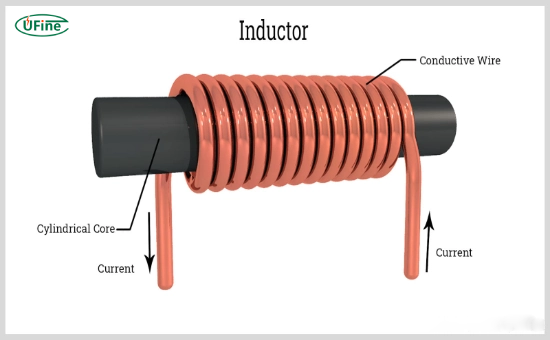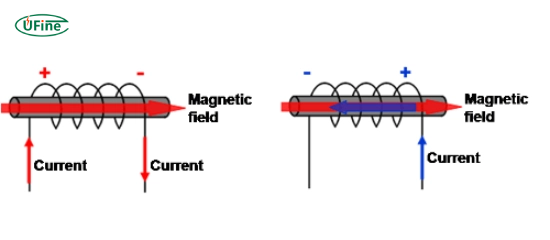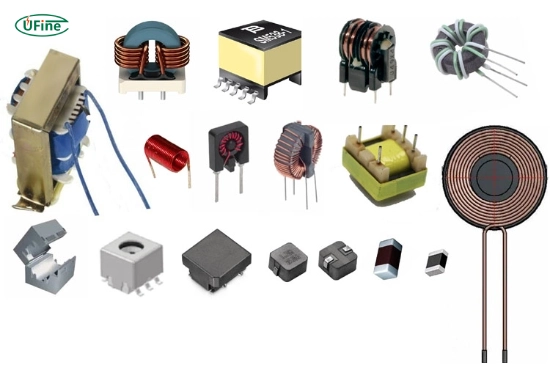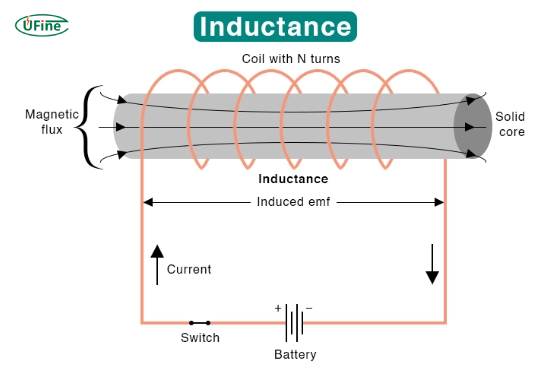
- Part 1. What is an inductor?
- Part 2. How does an inductor work?
- Part 3. What are the types of inductors?
- Part 4. What is inductance?
- Part 5. What is the difference between a capacitor and an inductor?
- Part 6. What are the applications of inductors?
- Part 7. How do you calculate the value of an inductor?
- Part 8. How do I choose a suitable inductor for my project?
- Part 9. What factors affect an inductor's performance?
- Part 10. What are common misconceptions about inductors?
- Part 11. FAQs
Have you ever wondered what an inductor is? This essential electronic component is vital in many devices we use daily. Inductors often work behind the scenes to ensure everything runs smoothly, whether listening to music on your phone, charging your laptop, or tuning into your favorite radio station. This article will explore the world of inductors, their functions, types, and how they differ from other components like capacitors.
Part 1. What is an inductor?
An inductor is a passive electronic component that stores energy in a magnetic field when electric current flows through it. Essentially, it acts like a reservoir for electrical power. When current passes through a coil of wire, it generates a magnetic field around it. This magnetic field can store energy temporarily and release it when needed.
Inductors are commonly found in various electronic devices. They are crucial in power supplies, where they smooth out fluctuations in current and voltage. They are also used in radio transmitters and receivers to filter signals and ensure clear communication. Understanding inductors is essential for anyone interested in electronics or electrical engineering.
Part 2. How does an inductor work?
The operation of an inductor relies on Faraday’s Law of Electromagnetic Induction. This law states that a change in magnetic flux through a circuit induces an electromotive force (EMF) in that circuit. Here’s a simple breakdown of how this works:
- Current flows through the inductor and creates a magnetic field around the coil.
- If the current increases, the magnetic field also increases. However, this change takes time; it takes time for the magnetic field to build up.
- Conversely, if the current decreases suddenly, the magnetic field collapses and induces a voltage that opposes the change (known as Lenz’s Law).
This behavior means inductors can resist changes in current flow. They are often used to smooth out spikes in electrical signals and maintain steady currents.
Part 3. What are the types of inductors?
Inductors come in various types, each designed for specific applications based on their construction and material properties:
- Air Core Inductor: These inductors do not use any core material but rely on air to create the magnetic field. Engineers typically use them when low inductance values are required and favor them for high-frequency applications.
- Iron Core Inductor: These inductors use iron as a core material to enhance inductance. They are effective for applications requiring high power but can suffer from losses at high frequencies due to core saturation.
- Ferrite Core Inductor: Ferrite materials provide high magnetic permeability and help create compact inductors with high inductance values. Engineers commonly use them in RF applications and power supplies.
- Iron Powder Inductor: These inductors, made from iron oxide particles, can handle higher frequencies better than traditional iron core inductors while performing well at lower frequencies.
- Chokes: A specific type of inductor that blocks high-frequency AC signals while allowing DC or low-frequency signals to pass through. Power supply circuits widely use chokes.
Part 4. What is inductance?
Inductance is an inductor’s property that quantifies its ability to store energy in a magnetic field. It is defined as the ratio of induced voltage to the current change rate through the coil and measured in henries (H).
The formula for calculating inductance L is given by:
- L = N * Φ / I
Where:
- L = inductance (in henries)
- N = number of turns in the coil
- Φ = magnetic flux
- I = current flowing through the coil
Higher inductance values indicate a more remarkable ability to store energy and resist changes in current.
Part 5. What is the difference between a capacitor and an inductor?
While both capacitors and inductors are passive components used for energy storage, they operate on different principles:
- Capacitor: A capacitor stores electrostatic energy between two plates separated by an insulating material (dielectric). It charges up when voltage is applied and discharges when needed.
- Inductor: An inductor stores energy magnetically when current flows through its coil. It resists changes to the current flow due to its ability to generate an opposing voltage.
In summary, capacitors store energy as electric charge, while inductors store energy as magnetic fields. This fundamental difference leads engineers to use them for different purposes within electronic circuits.
Part 6. What are the applications of inductors?
Inductors have a wide range of applications across various fields:
- Power Supplies: Inductors smooth out fluctuations in power supplies by storing energy during peak loads and releasing it during low-demand periods.
- Filters: Inductors form LC filters that block or pass specific frequencies with capacitors, making them essential for audio equipment and communication devices.
- Transformers: Inductors are critical components in transformers, which transfer electrical energy between circuits through electromagnetic induction.
- Radio Frequency Applications: Used extensively in radio transmitters and receivers, inductors help tune circuits to specific frequencies.
Part 7. How do you calculate the value of an inductor?
Calculating the value of an inductor involves understanding its physical characteristics and desired performance specifications. The basic formula for calculating inductance based on coil geometry is:
- L = (μ * N² * A) / l
Where:
- L = inductance (in henries)
- μ = permeability of the core material (in henries per meter)
- N = number of turns
- A = cross-sectional area of the coil (in square meters)
- l = length of the coil (in meters)
By adjusting these parameters, this formula helps engineers design inductors tailored for specific applications.
Part 8. How do I choose a suitable inductor for my project?
Choosing the right inductor for your project involves several considerations:
- Inductance Value: Determine how much inductance you need based on your circuit requirements.
- Current Rating: Ensure the chosen inductor can handle the maximum current without overheating or saturating.
- Frequency Response: Consider your application’s frequency range; some inductors perform better at specific frequencies.
- Size Constraints: Depending on your project, physical size may be necessary; ensure that your selected inductor fits within your design.
- Core Material: Choosing between air, ferrite, or iron core affects performance characteristics like efficiency and frequency response.
You can select an appropriate inductor that meets your project’s needs by carefully considering these factors.
Part 9. What factors affect an inductor’s performance?
Several factors influence how well an inductor performs:
- Core Material: The type of material used affects both inductance and efficiency. Ferromagnetic materials increase inductance but may introduce losses at high frequencies.
- Temperature: Inductance can vary with temperature changes due to material properties.
- Frequency: As frequency increases, certain types of inductors may experience losses due to skin effect and core saturation.
Part 10. What are common misconceptions about inductors?
Several misconceptions surround how inductors work:
- Inductors Store Energy Like Capacitors: While both components store energy, they do so differently; capacitors store energy electrically, while inductors store it magnetically.
- Inductors Allow Current Flow Instantly: Due to their inherent properties, inductors resist immediate changes in current flow; they take time to reach steady-state conditions after being energized.
Part 11. FAQs
-
What is an inductor used for?
Engineers primarily use inductors to store energy, filter signals, and manage power supplies within electronic circuits. -
How does an inductor affect signal quality?
Inductors can improve signal quality by filtering out unwanted noise and smoothing out variations in voltage or current. -
Can an inductor be damaged?
Excessive current or heat can damage an inductor by causing insulation breakdown or core saturation. -
Why do we need different types of inductors?
Different applications require specific characteristics such as size, efficiency at certain frequencies, and power handling capabilities, which other types provide. -
How do I test if my inductor is functioning correctly?
You can use an LCR meter to measure its inductance value; it may be faulty if it deviates significantly from its rated value or shows signs of shorts or opening.
Related Tags:
More Articles
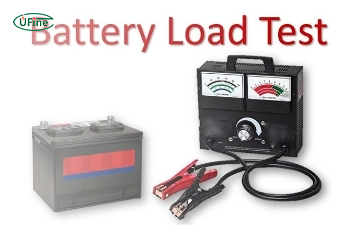
Battery Load Test: A Comprehensive Guide
Step-by-step battery load test guide for car, solar & industrial use. Learn how to load test a battery, interpret voltage charts, and avoid common mistakes.
The Comprehensive Guide to Battery Balancing and Battery Balancer
Discover how battery balancers improve lithium battery performance, lifespan, and safety. Learn types, functions, and tips to choose the right balancer.
What Is the Best Voltage for a Chainsaw Battery?
Compare 12V-80V chainsaw batteries for light pruning, medium firewood, and professional cutting. See best battery chainsaw with runtime charts and safety tips.
Lithium VS. Alkaline Batteries: A Comprehensive Comparison
Lithium batteries last 3–7× longer than alkaline and perform better in cold weather. Compare lifespan, cost, safety, and best uses to choose the right battery.
Comparing Lithium-Sulfur and Lithium-Ion Batteries: Which is Right for You?
Compare lithium-sulfur (Li-S) and lithium-ion batteries on energy, lifespan, cost, safety, and applications. Best choice for drones, EVs, and electronics.
